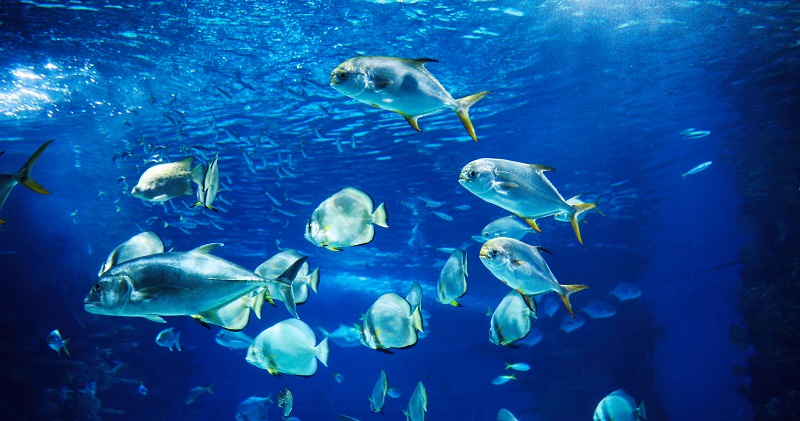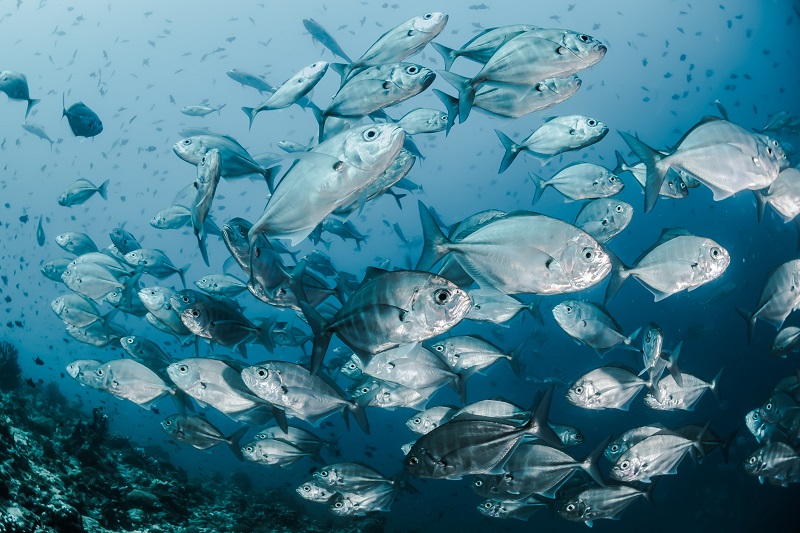
It may seem like the oceans are full of fish, but experts say they are actually at dangerously low levels in some areas. These days, fish are a critical part of our world. They are very important not only because they’re a primary food source for many regions, but are also an important part of the ecosystem, supporting other living species in the water and on land.
As we prepare to observe World Water Day, more specifically, on March 22, let’s take a look at how the fish that inhabit our oceans and seas are faring.
Fish populations are declining
Many ocean experts and marine biologists have raised alarm at the rate at which fish supplies are diminishing, especially in certain areas of water.
“We have seen huge declines in overall fish biomass across the world’s oceans, with precipitous declines post-World War II,” says Sean Anderson, professor chair, ESRM Program, California State University Channel Islands, who has also done a video presentation on this topic. “We have seen serial depletion of many, many stocks around the world such that the vast majority of fish stocks around the world are overfished or fished ‘maximally.’”
The areas that are affected the most
Some bodies of water had already exceeded the point of no return, the experts say. This includes the Mediterranean, the Caribbean, which Anderson calls the “poster child for over harvesting and destruction of fish populations and coral reef ecosystems,” and the Black Sea, which is populated mostly by jellyfish due to overharvesting and pollution from Soviet-era industry.
Another problematic area is the seas of West Africa, says Cristina Mittermeier, co-founder of SeaLegacy. A quarter of the fish are sold in the European Union and is now caught outside European waters, “much of it in previously rich West African seas,” she explains.
Additionally, another problem regarding fish populations, Mittermeier notes, is that the ocean’s chemistry is constantly changing thanks to the rising saturation of carbon, which comes mostly from the carbon dioxide in the air, connected with the rise of freshwater from melting ice and mixed with the desire to catch as many fish as possible. All in all, this means that “several fish populations have already disappeared and will never recover.”
What’s causing the problem
“Surprisingly, the biggest threat to fish in our oceans is not pollution, although it does play a significant role, especially in this era of micro-plastics,” says Mittermeier. What is the biggest threat?
“It is actually something many people have never even heard about, and that is government subsidies, the policy many governments have of subsidizing large fishing fleets to catch ever-diminishing stocks.” Mittermeier also explains that in Spain, one in three fish caught is paid for by a government grant.
“Some governments seem more concerned with keeping jobs alive in the fishing industry in the short-term than they are about the long-term health of our oceans,” she says. The United States has several fishing subsidies that critics say drive fishing to extreme levels.
These subsidies can generate overfishing, which is when fish are being taken from a body of water at a faster rate than they can reproduce, causing the fish population to decrease.
“While pollution is a problem to be sure, the biggest issue is good old overconsumption and over-extraction,” agrees Anderson.
“We simply have been taking out too many organisms who in turn cannot repopulate fast enough to keep their historic numbers at the levels they were.”
Another problem is that we can now see and count the fish in the ocean. “This allows the problem to get a massive head of steam before anyone really realizes there is a problem,” Anderson says. “Often, by the time we start to talk about putting harvest limits into play we have already figuratively fallen off the cliff.”
However, this is not new, because, as it appears, the situation has been going on for decades. A report published in 2018 by the Food and Agriculture Organization of the United Nations noted,
“Since 1961 the annual global growth in fish consumption has been twice as high as population growth.” The report highlighted one of the biggest challenges for fisheries and related agriculture operations as “the need to reduce the percentage of fish stocks fished beyond biological sustainability.”
Additionally, the most negative effects will mostly be felt by people in other parts of the globe. “For a wealthy country like the United States, it will mean less choice and less diversity on our plate,” says Anderson. “In large swaths of the world where fish is the primary source of protein for people and there are few alternatives, the biggest concern is wide-spread malnutrition and even starvation.”
This is particularly severe in Southeast Asia, Oceania, and much of equatorial Africa. It is expected more migration as environmental refugees move to other, wealthier parts of the world.

What this means for the environment
Experts are raising an alarm, claiming that what previously was considered the worst-case scenario is now a reality in some cases.
“We are already seeing the effects of fish depletion in places like the Pacific Northwest, where the overfishing of herring (a source of food for salmon), the overfishing of salmon, and the damming of salmon spawning streams is likely causing the painful and slow extinction of the famous Southern Resident Orca pod,” says Mittermeier, (because the orca depend on salmon as a primary food source).
This over-harvesting of fish will have a ripple effect on marine and coastal ecosystems worldwide, says Anderson. “You can expect more devastation from hurricanes as the coral reefs and mangroves—weakened by the unraveling of their ecosystems—fail to act as a buffer from storm surge.”
Differing opinions
Not everyone agrees with this awful prognosis because the belief that fish populations are being consumed at an alarming rate isn’t universal. This 2017 SeafoodSource op-ed, written by the owners of a California-based sustainable seafood company, shows the panic about removing fish populations as scaremongering.
The authors also said that the stories to this effect paint “a familiar but largely unsubstantiated picture that has been repeatedly touted by the media,” adding that, “overstating the direness of the state of global fisheries risks obscuring the many ways people can consume and enjoy seafood sustainably.”
The authors indicate a study that showed that while the average fishery is currently in bad health, “commonsense reforms to fishery management would dramatically improve overall fish abundance while increasing food security and profit.”
What you can do to help
We’re living in hard times for humanity and nature, but there are still some things you can do if you want to help move things in a better direction.
“We can reduce our consumption of wild-caught fish protein, support more sustainably-harvest seafood—such as items with a Marine Stewardship Council certification, and consume more farmed fish,” says Anderson.
You can start by asking your fishmonger or the wait staff, at a restaurant what species of fish they are serving and where it was caught.
“Our research shows that almost no one does this and this, in turn, creates little pressure for seafood sellers to be discerning buyers,” he says.
He recommends downloading and using the Monterey Bay Aquarium’s Seafood Watch app to make better-informed buying decisions.
In addition, Mittermeier suggests that we, as a population, “Take a real hard look at the role of subsidies in the demise of our oceans.”
“Removing the foundation of the food chain is never a good idea when you think about the implications for other species, like salmon and orcas.”












































